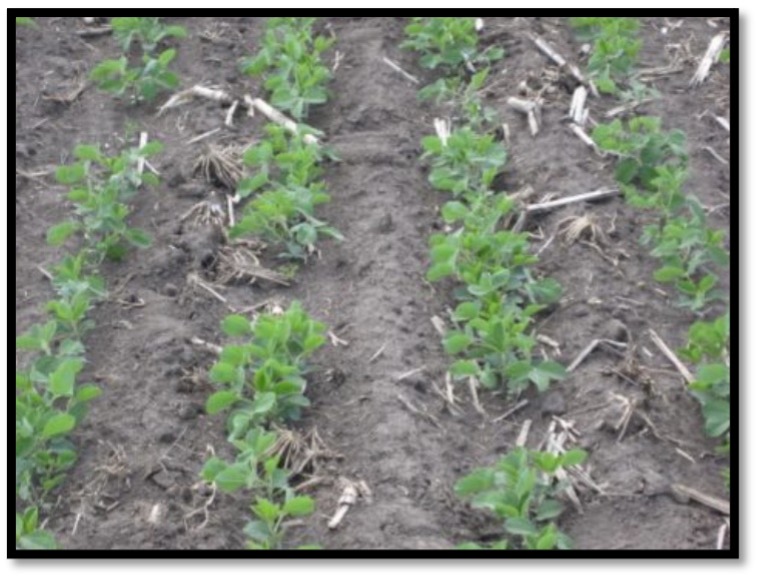A final soybean population stand of 90,000-110,000 planted early can still support optimum yield potential. However, if soybean population stand counts are between 50,000-70,000, you may need to consider beefing up the stand. When soybean populations become too low, it often leads to a weak and delayed canopy and will become harder for managing weeds. Another consideration is that at lower populations, some soybean varieties may “flex” their canopy too much and eventually have standability issues. There has been plenty of population yield trials conducted across the state in recent years showing that lower population of soybeans can still produce good yields, however consideration still needs to be given for the secondary issues that could arise from leaving a low population stand. Regardless of what the stand count is, it really comes down to how evenly spread the population is, if it is consistent across the field, or if there are major gaps across the field. If a stand is low but is evenly spread across the field, secondary issues will be minimized, unlike when large gaps are present.
With soybeans, very rarely would I ever recommend to a producer to completely terminate an existing stand of low population soybeans and start over (however, with corn, I would). Soybeans are amazingly simple for replanting, because you can simply go back into the field and spot in drowned out spots or if it’s across a larger area of the field, simply reduce the planting rate on the planter and plant at a slight angle.
While reading this Cool Bean article, I came across a new mobile app that was built to support soybean producers in collected soybean stand for replant consideration. I have recently downloaded this app and will be using it in the coming weeks to help evaluate soybean stand counts. To find this app, search ‘Bean Cam’ in the app store.


Pictures sourced from Coolbean.info.
Recommendations for stand counts:
1. Ensure that stand counts are conducted in several locations across a field.
2. Don’t just assume a stand looks good from the road or looking down a row; this can become very misleading.
3. Take row width into consideration when counting plants for a given distance:
a. 30-inch row beans need more consideration
b. 15-20-inch row beans are less of a concern for canopy development.
4. Now is a great time to also calculate the efficiency of your planter based on how many desired beans were planted and how many beans were found (dead or alive).
5. When taking stand counts, make sure to only count the alive and viable plants.
6. In situations with frost damage (April 2021) or other environmental damages, it may take some time (heat and sunlight) for a bean plant to let you know it’s no longer viable – you may have to evaluate a stand a few times.
7. Location can play into population: lighter soils and soils south of Route 16 may need to keep a higher stand count than other regions.
8. As we get further into May and closer to June, it will become increasingly important to keep the stand counts on the higher side.
Considerations:
1. Costs associated with replanting soybeans:
a. Most soybeans today are sold with a seed treatment package along with a free replant policy which can really be valuable when replant decisions come into play.
b. If a grower planted non-treated soybeans that did not come with a free replant policy, these growers need to run the numbers on this consideration a little harder, as now their fixed cost just became variable and increasing.
2. Depending on your crop insurance policy, there could be payment for replant.
a. Contact your crop insurance agent prior to making any decisions.
3. Soybean supply:
a. If you’re even remotely thinking about replanting soybean, please contact your seed supplier as soon as you can. As the season draws to an end, ample supply may not be sitting in your local supply shed – in fact, it may need to be shipped in.
b. Also consider that if you’re in a major replant area as a result of challenging weather conditions, you may not be the only producer asking your supplier for more soybeans. So be sure to communicate ahead of time, even if you’re not 100 percent sure you will need them.




 and then
and then